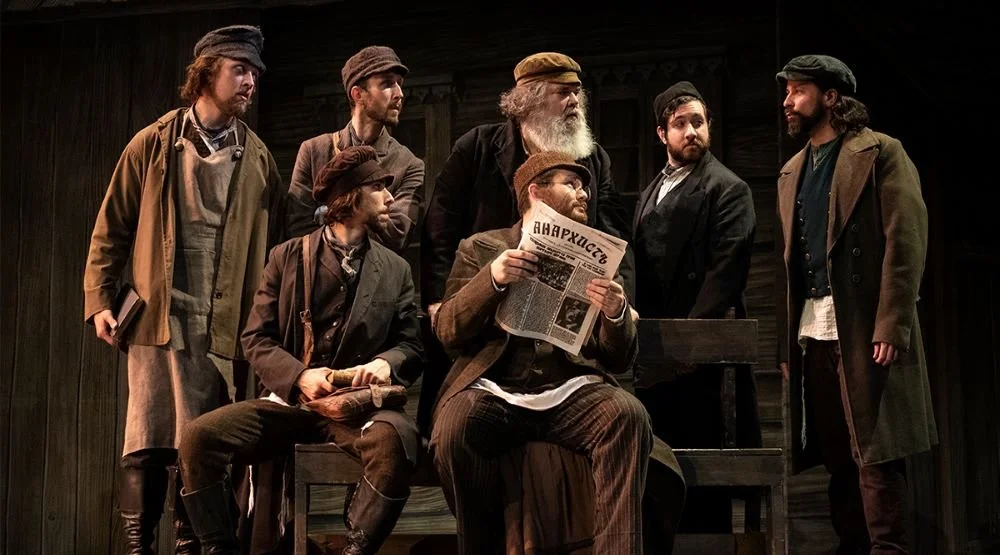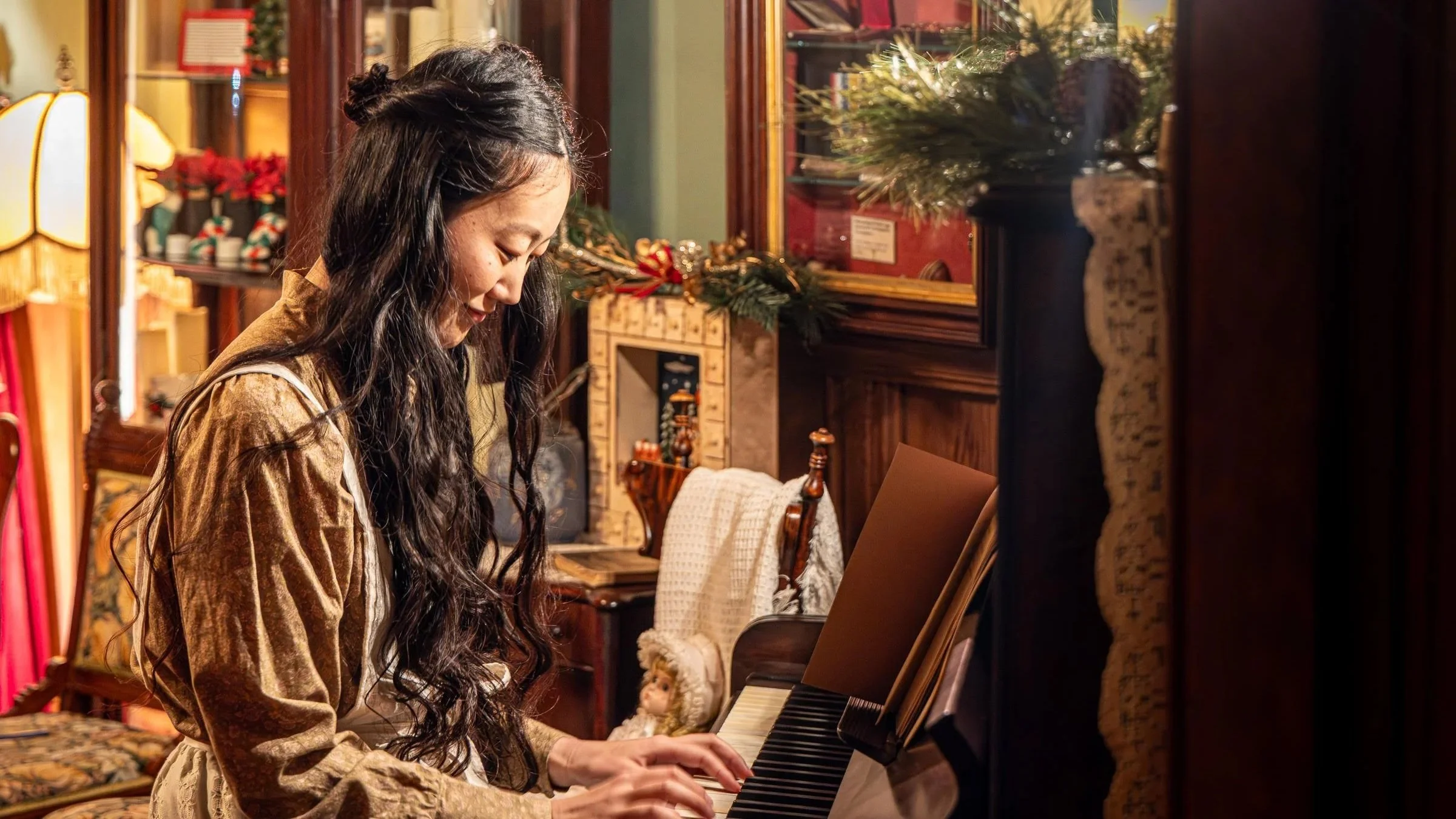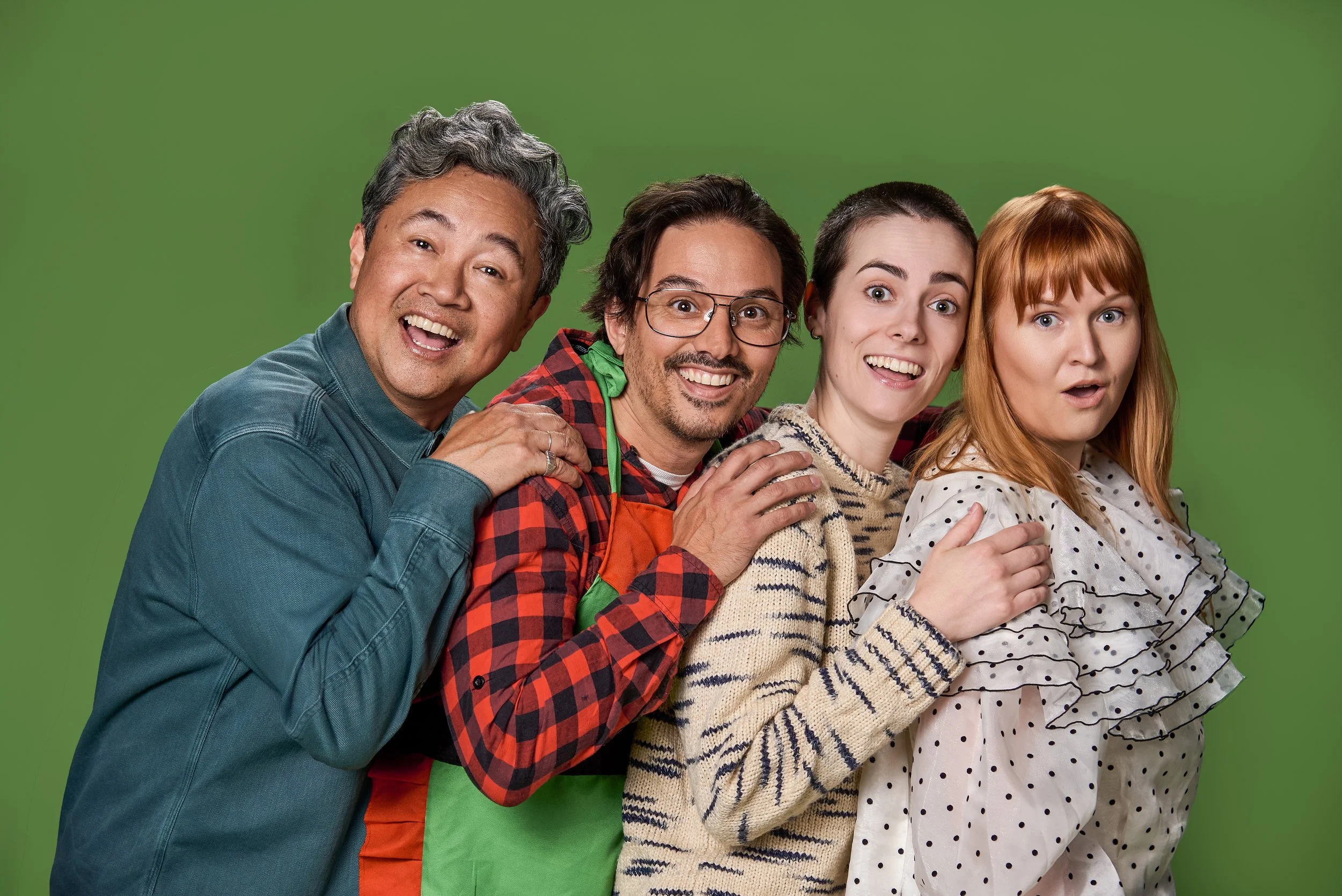Theatre review: A timely Fiddler on the Roof upholds classic Broadway-era stylings through a fresh, contemporary lens
Expressionistic stage design, strong performances, and choreography by Hofesh Shechter help Broadway Across Canada production soar
Fiddler on the Roof
Broadway Across Canada presents Fiddler on the Roof at the Queen Elizabeth Theatre until January 22
IF THEY DIDN’T KNOW better, audiences watching Broadway Across Canada’s touring production of Fiddler on the Roof would assume the show is a recent musical—one that speaks directly to the here and now. Its parallels to the current Russian oppression in Ukraine and references to clashes between tradition and social progress are uncanny.
As most theatregoers know, Fiddler on the Roof premiered on Broadway in 1964, winning the Tony Award for Best Musical that year. Still, its narrative seems as timely today as ever. All of this is wrapped up in an astonishing production that upholds the show’s classic Broadway-era stylings through a fresh, contemporary lens.
The two-act musical comedy-drama tells the story of Tevye, a Jewish milkman in early 1900s Russia, who suddenly sees his traditional Jewish religious and cultural practices threatened as each of his three eldest daughters chooses to marry for love. The show’s book, written by Joseph Stein, is a mastery of foreshadowing, as we see each of Tevye’s daughters’ romantic relationships develop in a believable way alongside the building action of the Russian forces.
The show’s score, with music by Jerry Bock and lyrics by Sheldon Harnick, is a prized collection of Broadway standards such as “If I Were a Rich Man”, “Sunrise, Sunset”, and “Matchmaker, Matchmaker”, all extremely well performed by the cast and orchestra. Not only are these songs a joy to hear, they also drive the character development and the story. In “Matchmaker, Matchmaker”, we understand the youthful hopes and fears of Tevye’s eldest daughters, Hodel, Chava, and Tzeitel. By the end, we witness Hodel perform the heartbreaking “Far From the Home I Love”, having gone through the rigours of finding love and the hard decisions she’s had to make as a result.
Helping the classic show feel surprisingly fresh is the interesting contemporary lens that director Bartlett Sher creates, in collaboration with set designer Michael Yeargan and lighting designer Donald Holder. This Fiddler starts in the present day with actor Jonathan Hashmonay visiting the barren space that was once Anatevka (the village where the musical is set). Hashmonay begins telling us the story, and as he removes his coat, he transforms into Tevye, revealing his work clothes and prayer shawl. We’re whisked back to the Anatevka of the early-20th century. But at every turn there are modern flourishes. The set looks somewhat abstract at times, such as the images of village houses that float in the air and a scrim of a sunset that only partially fills the stage. These devices beckon us to use our imaginations to fill in the rest—a departure from classical musical theatre, which is usually much more literal and elaborate in its presentation.
As the story gets darker, so do the visuals; trees that once looked enchanted later appear ominous, casting dark shadows. The show ends with a compelling image of the cast as they reluctantly move toward their fates.
As the show’s star, Hashmonay is charismatic, lovable, and empathetic as his character works through his dilemmas and ordeals. Hashmonay is fun to watch in each of the many one-on-one conversations he has with God, the highlight being his solo “If I Were A Rich Man”. Hashmonay employs an extensive shading to each section of the piece, from nuanced, internalized moments to the unleashing of his spectacularly bold vocals.
Hashmonay also portrays Tevye as a “modern man”, making him relatable to audiences. There isn’t a stern, emotionless early-20th-century farmer in front of us. Instead, we see someone who has empathy for others, recognizes the humour in life—even through the dark turns—yet he sometimes lets his emotions and stubbornness get in the way. His relationship with his wife, Golde (a serious but endearing Maite Uzal), and his five daughters is heartwarming.
Tevye’s eldest daughter Tzeital (Randa Meierhenry) and her beloved Motel (Daniel Kushner) have an adorable chemistry, adding a breath of lightheartedness to the show. And Kushner’s rendition of “Miracles of Miracles” is fabulous, the performance delivering the song with youthful passion and a soaring voice.
As Hodel and Chava, GraceAnn Kontak and Yarden Barr respectively get to display their impressive acting chops, as their characters develop from innocent teenagers into young women who have to make life-changing decisions. Both performers sing like nightingales, with Kontak making “Far From the Home I Love” extremely moving.
As Perchik, a student with revolutionary ideas, Austin J. Gresham provides the believable spark that gets the villagers contemplating the possibility of embracing progress. And as the town’s matchmaker, Yente, and butcher, Lazar Wolf, Mary Beth Webber and Andrew Hendrick respectively provide wonderful comic relief. Webber’s busy-body mannerisms and Hendrick’s vibrant personality and distinct raspy voice are perfect for their characters.
Despite the heavy subject matter, one fun highlight is “Tevye’s Dream”, where costume designer Catherine Zuber’s work gets to shine. The dream sequence has been refreshed into the kind of dark, twisted, quirky vision that you might see in a Tim Burton film. The ghost of Grandma Tzeital (a delightful Emily Qualmann) is the vision of a departed glamour queen, with frighteningly long nails and over-the-top makeup, jewellery, and gown. The ensemble members look like they’ve stepped out of “Nightmare Before Christmas”, with undead, skeleton-like masks. And as the departed Fruma-Sarah, Rosie Webber is a treat to watch as she towers over the stage, her long dress seemingly never-ending.
British-Israeli dance artist Hofesh Shechter’s choreography is exceptional, helping to carry the story along and demonstrating the heavy significance Jewish tradition has on characters. From the start, we see the villagers using Shechter’s choreography to declare their steadfast practices in “Tradition”. Later, we see Shechter melding traditional Jewish dance with expressionistic, contemporary-shaded choreography in numbers such as “To Life” and “The Wedding”, including the famous “Bottle Dance” originally set by the iconic Jerome Robbins. This production has an ensemble of phenomenal male dancers who are breathtaking to watch in their athletic, stylized, and interpretative performances, under the leadership of dance captain Jacob Nahor. (And if you’re wondering why I’m only mentioning the male dancers, in the show’s setting, only men were permitted to dance.)
The manner in which Fiddler on the Roof illustrates the challenge of balancing personal agency with societal and familial values is in itself timeless. On opening night, my friend said it reminded him of his present-day Indian family. This gem of a show also reminds us that the fight for personal rights and freedom is long-standing. During the curtain call, Hashmonay stated that each performance is dedicated to the people of Ukraine. Fiddler on the Roof is not a time-capsule show. It’s a commentary on perseverance and hope, which this production thankfully is keeping strong and bright.












